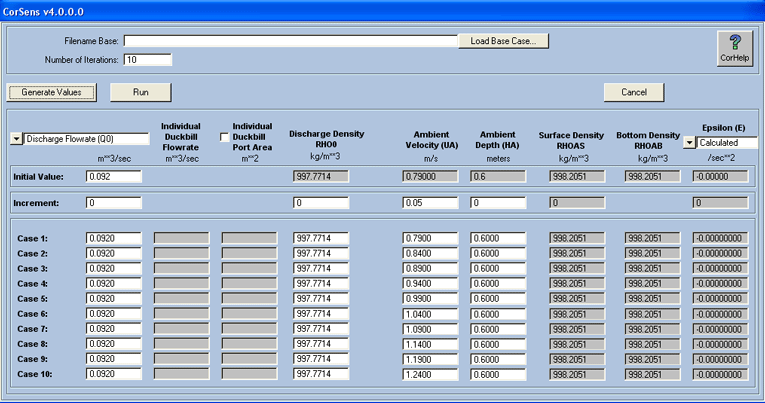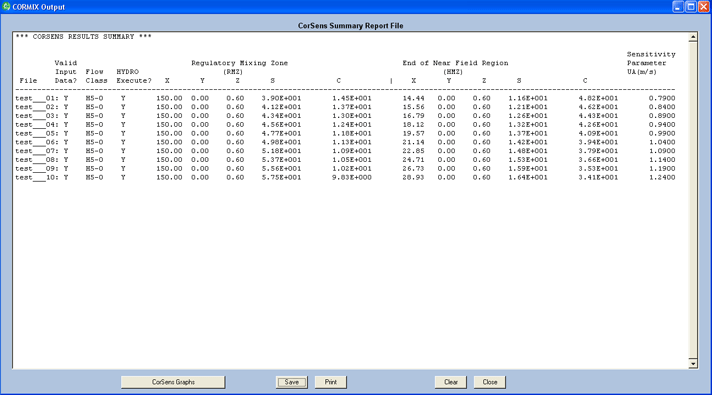Do you need to analyze your mixing zone properties for a range of discharge and ambient density conditions? Do boundary interactions strongy effect your near-field dilution values? Is the discharge stable over a range of ambient conditions? What effect does ambient current have on density current upstream intrusions? Sensitivity studies are generally recommended to answer these questions for regulatory mixing zone compliance using a range of discharge and ambient conditions for simulation.
However, there is no need to enter individually enter data for sensitivity studies/model calibration with CorSens.
This advanced outfall design tool allows you to create sensitivity studies quickly without
the tedious repetition of manual data entry. If time is important to you, then let CorSens pay for itself the first time you use it.
Please review the CORMIX Feature Comparison table for CORMIX v12.0 versions, to check for CorSens availability - VIEW
Features of CorSens
- Obtain a summary report of mixing zone regulatory CCC conditions for your sensitivity analysis.
- Conduct near-field and far-field flow analysis automatically for CORMIX1, CORMIX2, and CORMIX3.
- Analyze variation discharge flow rate or velocity conditions.
- Consider change in discharge flow velocity (flowrate) vs. port area for simulation of diffuser performance when fitted with duckbill check valves.
- Study a range of steady ambient velocity conditions.
- Determine the effect ambient depth on discharge stability and flow class.
- Vary the ambient linear density stratification likely to occur at your location.
- Visualize your results with CorVue.
- Online Help.




